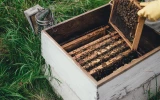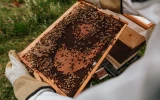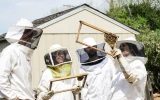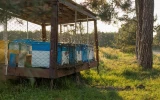The Real Cost to Start Beekeeping (2023) - With 4 Examples
Beekeeping is not a very costly hobby, but the first year will be expensive as you learn how to take care of bees and purchase the many pieces of equipment you'll need. The size of your business, the kind of equipment you buy, and how much time you devote to caring for your bees all affect how much it costs to raise bees. How much money should you invest initially to start a honeybee farm? Let's find out.
The average cost of starting beekeeping as a hobby is between $318 and $1,332. This includes investing in the necessary equipment, a course, and supplies. To start commercial beekeeping, you need to budget $522 to $120,000 for equipment, supplies, permits, land, a warehouse facility, and labor.
In this post, we'll go through the cost factors for starting backyard beekeeping and making it a business. A great deal of time was put into researching for this article to come up with the various choices you'll need to make that could affect your initial capital outlay. Now you can quickly browse and decide whether you want to pursue beekeeping as a hobby or as a profit-generating enterprise.
Summary
- You need a full beehive, hive tools, and protective clothing as the main pieces of equipment and tools.
- Beekeeping has a relatively small initial financial outlay but has numerous non-financial advantages, such as increased garden output, fresh honey, and a sense of reliance.
- Recognize that beekeeping is an endeavor that will require both time and money.
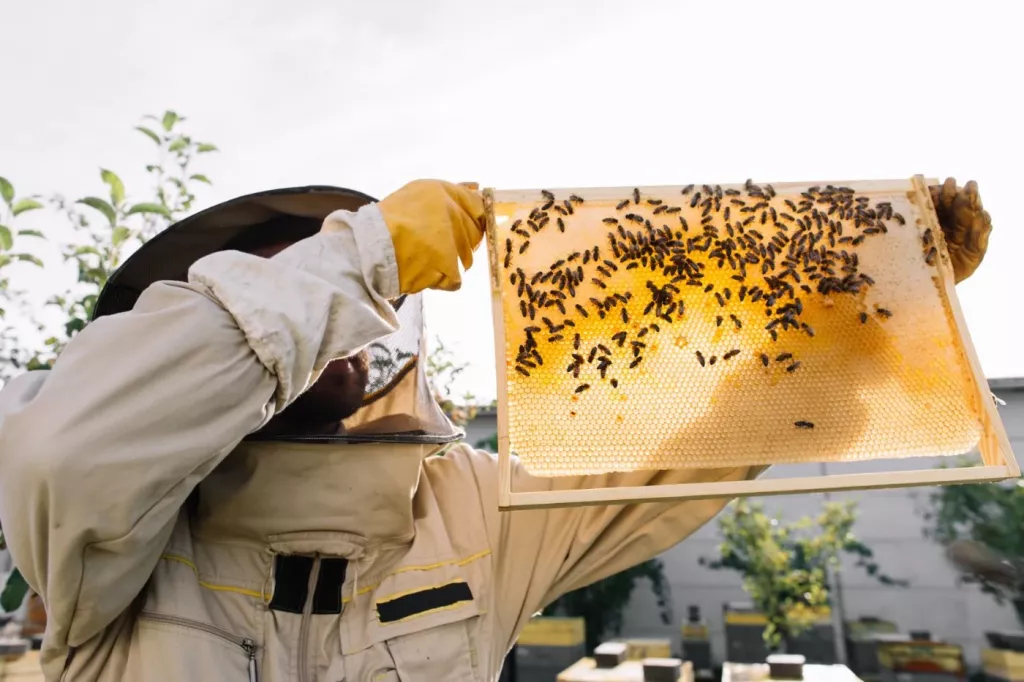
On this page:
- The Actual Costs to Start Beekeeping in 2023
- The Real Cost to Start Hobby Beekeeping
- The Real Cost to Start Homestead Beekeeping
- The Real Cost to Start A Small Commercial Bee Farm
- The Real Cost to Start A Large Commercial Bee Farm
- How Much Time Is Spent Beekeeping?
- Ways to Save Money When Starting Beekeeping
The Actual Costs to Start Beekeeping in 2023
Start-up costs for hobby beekeeping will average $825. Although this initial cost may appear significant, keep in mind that the majority of the expenses are startup costs. The equipment should last for many years if properly maintained after the initial purchases of hives, tools, and bees. The bees should also be able to reproduce for a very long time if they are in good health.
The initial investment required to start beekeeping with one hive is around $1,000. A single set of hive parts costs about $350. A package of bees costs about $140. $210 is spent on protective clothing and basic tools, while $300 is spent on miscellaneous expenses like taxes and supplies.
The biggest expense in setup is the purchase of tools and equipment. These equipment and tools have the benefit of being one-time expenses. They will survive for many years with careful use, upkeep, and quality purchases. The honeybee colony is the other significant component of the investment.
The Real Cost to Start Hobby Beekeeping
Hobby beekeeping can cost you anywhere from $318 to an average of $1,135 to start. Here, we'll assume that you start off with the minimum requirements, including a beehive, bees, safety gear, basic tools, and mite treatment.
Beekeeping can be a hobby if it's in an urban, small, or backyard setting for the purpose of personal consumption and recreation without necessarily making a profit. In hobby beekeeping, you are not eligible for tax benefits and also do not qualify for agricultural tax credits because you are not engaged in money-making.
Starting beekeeping with at least two hives is highly advised. With two hives, you can transfer resources between them and compare how well each colony is doing over the course of the season. You will also learn more and experience more if you start with two hives.
The cost breakdown for you to start beekeeping is shown below:
| Beekeeping Essentials | Cost |
|---|---|
| Protective gear | $181 to $490 |
| Beekeeping tools | $33 to $102 |
| Complete hive | $60 to $600 |
| Bees | $0 to $350 |
| Treatment for mites | $44 to $410 |
| Total cost to start | $318 to $1,952 |
| Average cost | $1,135 |
Cost of protective gear
For the most part, the protective gear helps you avoid being stung while performing tasks that require opening the hive.
| Protective Gear Item | Cost |
|---|---|
| Bee suit | $100 to $194 |
| Beekeeping jacket | $50 to $190 |
| Beekeeping veil | $16 to $61 |
| Gloves | $15 to $45 |
-
Bee suit: One beekeeper suit will do. Although you can buy the suit's individual parts separately, buying the whole thing is recommended for maximum protection.
-
Beekeeping jacket: Wearing a beekeeping jacket just shields your upper torso and head. The jacket is cooler than a full bee suit, boasts easier movement, and is typically more comfortable to wear. It is also simpler to put on and take off than a full suit.
-
Bee veil: A bee veil protects your face and head from the bees.
-
Gloves: You'll need just one set. Or, you may just get the complete beekeeper gear, which comes with gloves. Bee gloves shield the hands and arms.
A beekeeping suit is not necessary, but it can make beekeepers, especially beginning beekeepers, feel safer and more secure. If there are days you don't feel like wearing all that gear, there are bee suit alternatives from which you can choose to wear.
Cost of basic beekeeping tools
| Beekeeping Tools | Cost |
|---|---|
| Hive tool | $5 to $26 |
| Smoker | $20 to $60 |
| Bee brush | $8 to $16 |
-
A bee smoker: One bee smoker is all you'll need, and they're usually not too expensive. Bee smokers require fuel to operate, so you'll need to resupply frequently. As an alternative, you can start looking in your immediate area for anything that could be used as fuel, including hay or dry long grass.
-
A hive tool: You’ll need only one. You will need the hive tool to assist you in getting past the propolis-sealed cover and frames. A beehive tool is made to make it easier to open the boxes and take out the frames for inspection. Additionally, it is utilized to remove extra propolis and wax from the hive's components.
-
Bee brush: When you want to get a good look at the brood, the bee brush makes it easier to brush nursing bees out of the way. A bee brush is a tool to move bees on the combs and in the hive gently and without irritating them. After inspecting hives, it is often helpful to brush a stray bee off of clothing.
Cost of bees
You can get a beehive with bees for $175 to $565.
| Bees | Cost |
|---|---|
| Bee packages | $140 to $195 |
| Nucs | $150 to $215 |
| Queen bee | $35 to $100 |
| Split a colony | $150 to $350 |
| Swarm | $0 |
-
Bee packages: You will need packages of honey bees weighing roughly 1.35 kg to start (3 pounds) that contain around 10,000 bees plus a queen. Depending on where you buy it, prices will vary. Purchasing bees from local beekeepers might provide you with a better deal.
-
Nucs: A "nuc" or nucleus hive comprises three to five frames of bees and a queen. Beekeepers build nucs from strong hives that are either getting ready to swarm or are strong enough to split off frames that contain the following: brood (eggs or larvae), pollen and nectar (food), and bees.
-
Queen bee: The package of honey bees can be purchased with a queen bee. Costs will vary; however, a queen excluder is typically included in the price.
-
Split a colony: A split is created by moving a number of frames from an established, healthy colony into a new hive. Some beekeepers agree to split their hives, and for a fair price, they may even sell you a whole hive of bees.
-
Bee swarm: A swarm is free. A swarm is simple to "catch" or collect with help or experience, and placing them into a hive box is much easier than installing a package. The fact that these bees have the DNA to survive a local winter is another advantage of establishing or expanding your apiary with swarms.
Cost of a complete beehive
You'll need at least one beehive kit, and costs will vary based on the kit's individual features. Assembled kits cost from $105 to $295, while unassembled kits cost from $60 to $254. Beehive kits will typically come with an entrance reducer in addition to the foundations, frames, and supers. Each hive contains 8 to 10 movable frames on which the bees store their honey.
You can buy established hives at any time of the year. Starter kits include the aforementioned items, along with a book on basic beekeeping. The cost range for the beginning beekeeping kits and the deluxe starter kits is $120–$600.
A beehive is a functional structure for growing honey bees and producing honey. It is the home of the bees, so it is essential that you provide a hive for them. They reside there, rear their young, and keep their honey. A beehive is packed with wooden frames, each of which contains a single wax comb.
Cost of treatment for mites
This price includes what it costs to manage the farm profitably. A bee farm is prone to mite attacks, so you must regularly treat your farm with a variety of mite control measures that are appropriate for your farm. The cost of treating your farm will range from $44 to $410, and it typically depends on the mite treatment option you choose.
| Treatment for mites | Cost |
|---|---|
| Oxalic acid | $5 to $50 |
| Formic pro | $20 to $165 |
| Apivar | $19 to $195 |
Beekeepers who have just begun their beekeeping operations should use great caution to prevent honey bee infections. This also holds true for honey bee parasites and pests. Your main priority should be to control varroa mites and hive beetles. You will spend no more than $100 USD on the necessary treatment equipment for these two major honey bee issues.
Miscellaneous costs
| Items | Cost |
|---|---|
| Beehive paint | $37 to $215 |
| Sugar and pollen patties | $20 to $95 |
| Winter supplies | $23 to $45 |
| Winter feed | $110 |
| Winter patties | $3 |
| Electric fence | $200 to $600 |
| Straps | $1 to $12 |
| Uncapping fork | $4 to $34 |
| Frame grip | $4 to $30 |
| Total cost | $292 to $1141 |
| Average cost | $716 |
-
Beehive paint: Painting your beehives will help protect the wood since the outer surfaces are exposed to sun, rain, temperature fluctuations, and other natural tendencies. Some beekeepers employ a color scheme when painting their hives to make it simple and quick to distinguish between the various sizes. Only the exterior of the brood box and supers should be painted.
-
Sugar and pollen patties: Pollen patties are a substitute for pollen and include all the protein that honey bees need to stay healthy. You can buy these already prepared, or you can make them at home using a pre-made mix or a recipe.
-
Winter supplies: Ensure that all of your covers, boards, and boxes are in good condition and able to withstand the harshest weather. Make any repairs or replacements that are required. Strong winds are kept at bay by wrapping the beehive. Foam insulation boards can also keep drafts out and heat in, but use caution while covering your hive.
-
Winter feed: You can feed your bees with plain white sugar crystals or commercially made bee candy. If the temperature in your location falls below 50°F (10°C), it is better to use fondant, sugar cakes, or granulated sugar rather than syrup.
-
Winter patties: These are mostly composed of carbohydrates, with a small amount of protein and fat. The low protein and fat content is perfect for fostering colony health without unnecessarily causing a population increase.
-
Electric fence: If you live in an area that is home to any type of bear and other types of wildlife, consider installing an electric bear fence to protect your beehives. An electric pulse is transmitted over wires by an energizer or charger, shocking the animal.
-
Beehive straps: These serve a variety of purposes, including keeping animals out of the hive, keeping your hive together if it ever gets tipped over, and facilitating simple lifting and transportation. They also secure the cover to the beehive in windy conditions.
-
Uncapping fork: When your beekeeping knife can't reach the corners of a capped honey frame, uncapping forks are made to scrape or peel the wax off of those areas.
-
Frame grip: During inspections and harvesting, one hand may be free to perform other activities while the other lifted the frames. In order to securely latch onto the frame, this tool clamps down and locks onto the frame with light pressure.
Variable costs when starting beekeeping
Educate yourself about beekeeping
Before starting to take care of a bee colony, it is strongly advised that you obtain some form of training in honeybees and beekeeping. It's highly possible that your bee colony will die before the end of your first season if you try to keep bees without having even the most fundamental knowledge of beekeeping.
You will join a sizable group of people who desired to keep bees but were unwilling to invest the time and effort necessary to learn how to do so. These people are suddenly the proud owners of empty bee boxes in an increasing number of cases.
| Beekeeping Education | Cost |
|---|---|
| Class or online course | $25 to $450 |
| Beekeeping books | $11 to $60 |
| Beekeeping club | $15 to $40 |
You may learn a lot about raising bees in inexpensive ways, such as:
- Taking a class or course online: Although some classes are free, the majority of high-quality classes cost money.
- Reading books on beekeeping: You can borrow them for free from someone you know.
- Joining a beekeeping club: Check to see whether your local area has a beekeepers association. Some offer hands-on apiary training. A few also provide mentorship programs.
- Along with YouTube videos, there are several Facebook groups and forums where you can learn new things. For you to discover fresh perspectives and tips for beekeeping on a budget, you may opt to interact personally and locally with other beekeepers.
Cost of compliance varies per state
Apiary registration, licenses, and permits vary widely depending on your state. In Ohio, for instance, any person keeping one or more colonies of bees needs a license that costs $5.00 per yard with one or more bee hives.
In New Hampshire, apiary registration is voluntary. Tennessee has an Apiary Act of 1995 that requires apiaries to be re-registered every 3 years. Washington apiary registration costs between $5 and $300 depending on the number of hives owned and broker status.
Land costs also vary per state
Aside from beekeeping on land you own, you can also rent land from other property owners. In the US, an acre of land for beekeeping typically costs $32 per year to rent. Depending on the location, size, and whether the land is being leased or acquired, the cost of land can range from $10 to $500 per acre.
The cost of buying property for beekeeping can range from $1,000 to $10,000 or more per acre, depending on the location, availability, and soil quality.
Plant costs depend on available forage
Planting a variety of species with overlapping flowering seasons, flower types, and plant heights is crucial. Bees will have food all year round if this is done. There are many different kinds of trees and shrubs that provide food for bees, but you should choose one based on what grows well in your region.
Plant trees that are local to your area whenever you can. Honeybees, which are not indigenous to the United States, as well as many other kinds of bees and pollinators who may rely on native fauna, will be supported by native trees.
Water facility costs vary on the need of your farm
Bees require a water source near the hive in a suburban environment. The bees must always have access to water from the sources. If the supply is allowed to dry up, the bees will discover and use a new source. It will be quite challenging to "re-train" them on your water supply if it's your neighbor's pool.
Fresh water should always be available next to beehives for the benefit of the bees. Otherwise, they might be drawn to the hot tubs, fountains, birdbaths, and pools in the area. For the bees to land on while they drink, place floating pieces of wood, bark, or mulch in an open watering container or fill it with rocks.
The Real Cost to Start Homestead Beekeeping
The cost to start homesteading runs from $225 to $1,332, with an average cost of $778. The goal of homestead beekeeping is to have a self-sufficient lifestyle that does farming on small acreage without having to worry about the laws.
Most beginning beekeepers dress in full beekeeping gear since it's crucial when you make mistakes while learning. Beekeeping suits are not necessary, but they can make you feel safer and more secure when handling your bees. However, in the computation below, we only include the veil and gloves, which are the most important to help cover your face and hands.
Here, we assume you buy unassembled hive components for you to assemble. Below is a sample breakdown of costs to start your own colony of bees.
| Unassembled Hive Kit | Cost |
|---|---|
| Top cover | $18 to $33 |
| Inner cover | $12 to $23 |
| Standard-sized super | $16 to $30 |
| Frame with foundation | $4 to $6 |
| Frame without foundation | $2 to $5 |
| Separate foundations | $1 to $3 |
| Queen excluder | $6 to $23 |
| Bottom cover | $26 to $36 |
| Hive stand | $13 to $107 |
| Entrance reducer | $1 to $5 |
| Entrance feeder | $3 to $9 |
| Bees | $0 to $350 |
| Treatment for mites | $44 to $410 |
| Hive tool | $5 to $26 |
| Smoker | $20 to $60 |
| Bee brush | $8 to $16 |
| Beekeeping veil | $16 to $61 |
| Gloves | $15 to $45 |
| Sugar and pollen patties | $20 to $95 |
| Total cost with frame with foundation | $226 to $1,330 |
| Average cost with frame with foundation | $778 |
| Total cost with separate frame foundation | $225 to $1,332 |
| Average cost with separate frame foundation | $778.5 |
The Real Cost to Start A Small Commercial Bee Farm
To start a small commercial bee farm, you should prepare $522 to $5,095. Here, we assume you have the essential supplies and tools, the cost for learning, the miscellaneous costs, as well as the tools for harvesting the honey you intend to sell.
| Honey Harvesting Tools | Cost |
|---|---|
| Beehive brush | $8 to $16 |
| Uncapping fork | $4 to $34 |
| Uncapping knife | $15 to $210 |
| Honey strainer | $9 to $38 |
| Draining bucket | $8 to $22 |
| Frame perch or holder | $15 to $32 |
| Extractors | $145 to $1,650 |
| Total cost | $204 to $2,002 |
| Average cost | $1,103 |
The amount or cost of starting will depend on the strategy and scale you intend to employ. Most of it will be consumed during the initial stages of starting your beekeeping enterprise. Although some beekeeping businesses have been started with less money, it always pays to have some extra cash on hand in case you suddenly need something.
When you start a smallholding beekeeping business, it's crucial to register your business, ensure compliance with laws and regulations, and market your beehive products. These costs vary depending on your location, your goal, and how you market your products.
Depending on where you are, different things could be offered at various prices. The expense of making sure you are in compliance varies depending on the rules and laws in each location. Also, the cost of accounting services and business registration varies depending on the service provider.
You also have to determine whether beekeeping is practiced in the area you choose. If beekeeping is being done, it's a good idea to connect with nearby small farmers and others. Assess if they are familiar with the business of beekeeping and how it is run and promoted. This will make it easier for you to develop your skills and capacity.
Expert beekeepers have mastered the art of reading their hives and frequently forego bulky coats and gloves in order to maximize their tactile sensitivity when performing inspections.
The Real Cost to Start A Large Commercial Bee Farm
You can start a large commercial bee farm with an initial investment of $26,000 to $120,500. According to equipment manufacturers from Nebraska, Utah, and New York, extraction line equipment packages cost between $25,995 and $115,426.
| Honey-Processing Equipment | Cost |
|---|---|
| Barrel hand truck | $425 to $1100 |
| Barrel lifter | $525 to $630 |
| Bottling bucket or pail | $19 to $70 |
| Bottling tank | $170 to $2,600 |
| Barrel heaters | $160 to $960 |
| Honey extractor | $145 to $1,650 |
| Storage tank | $134 to $2,000 |
| Honey sump | $413 to $4,533 |
| Uncapper | $1,990 to $10,230 |
| Wax melter | $1,326 to $5,300 |
| Total cost | $5,307 to $29,073 |
| Average cost | $17,190 |
A beekeeper must consider honey production while creating a business plan for a commercial beekeeping operation. The honey house's operational equipment consists of equipment for extracting honey, processing wax, heating tanks, the warming room with hot water, pumps, and equipment for moving and storing honey. You can either buy these equipment as a whole or in separate pieces.
The money you spend on branding is included in the financial cost of beekeeping if you choose to do it.
Some beekeepers also create websites for branding and marketing initiatives. Online marketing is simple and affordable when a website and social media accounts are set up. You can also look at beekeeping clubs, flea markets, and agricultural exhibits as low-cost marketing options.
A warehouse or base facility is necessary for a beekeeping operation's equipment assembly, storage, and other operations. The facility must be protected against the elements, bees, and theft. Building a warehouse can range greatly in cost.
You might also consider some specialized equipment for wholesale honey, such as a scale, a lifter, a heater, a forklift, and a truck for barrels. For bottling, labeling, and packing honey for shipping, retail honey needs its own packing area. Bottling tanks, filter systems, barrel heaters, labelers, and honey buckets or jars, are kept in the packing room.
How Much Time Is Spent Beekeeping?
You can run your operation in around 30-45 minutes per hive per week, roughly. This includes weekly inspections during the spring and summer. The amount of time required fluctuates seasonally due to various activities like swarm prevention, honey harvesting, beekeeping education and research, routine inspections, hive repairs, and keeping records on normal and unusual bee behavior.
To make sure that your hives thrive, plan on investing between 15 to 40 hours per hive each year. You'll want to do research and devote as much time as you can to learning about your honeybees in your first year. Budget a few extra hours for this task.
The best time to start a beehive
Although this varies across the nation, spring is the ideal time to build a beehive when the weather is warm and the plants are blossoming or making nectar, allowing bees to once more produce their own food. Bee colonies benefit from having a nectar source as they become acclimated to their new surroundings during pollination activities.
A general rule of thumb for beekeepers is to schedule the arrival of new packages of bees for about a week prior to the first spring nectar flow.
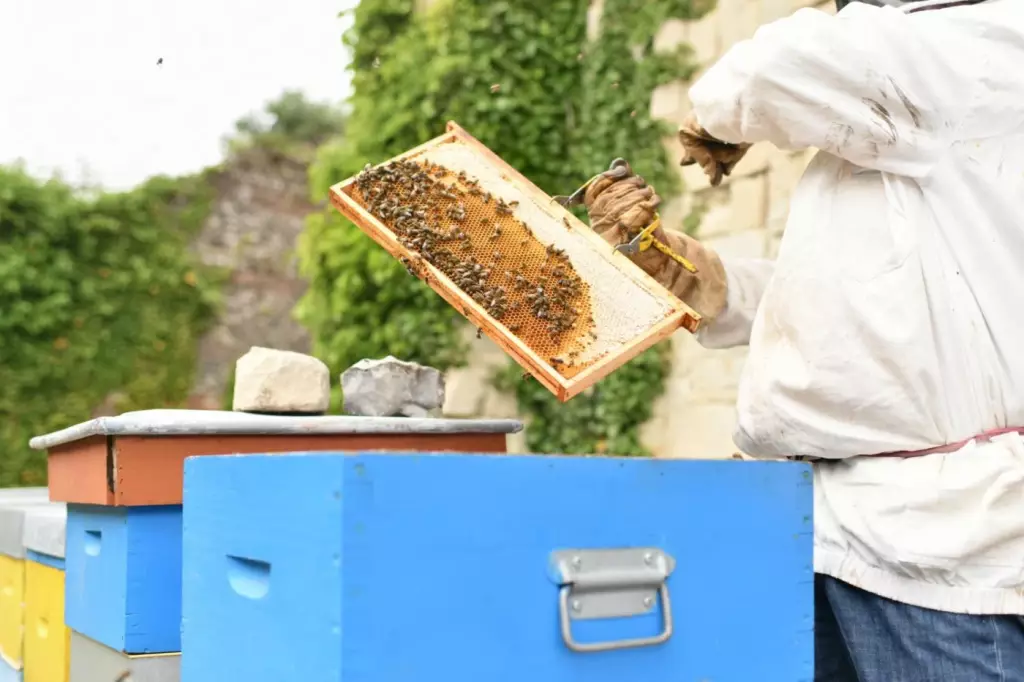
Ways to Save Money When Starting Beekeeping
Beekeeping proves to be a costly endeavor. However, here are some ways you can save money:
-
Capturing a swarm is the easiest way to save money on honey bee purchases.
-
Buy your supplies in bulk. Sustainable beehives and other beekeeping materials are available from suppliers at discounted wholesale prices.
-
Reuse old hive frames. As long as the upper half of the deep hive body is undamaged and the frame rest area is in good shape, old boxes can be recycled by cutting down deep hive bodies that are damaged on the bottom and turning them into mediums or shallow supers.
-
Choose paints at a discount. Consider using off-color and returned paints and stains that are supplied at a discount from a local paint store to preserve your woodenware and save money on paint costs. Savings of 70%–80% or more can be realized by selecting whatever colors the seller happens to have in stock.
-
Purchase only the necessary items. Both money and storage space can be saved by forgoing optional equipment and only purchasing essential bee equipment. Each beekeeper is likely to have their own list of essentials, but as a starting point, don't try to keep bees without the following: a bottom board, hive body, honey supers with frames, inner cover, outer cover, smoker, hive tool, and veil.
-
Purchase used equipment. Buying used equipment from someone who has stopped beekeeping is another excellent way to save a lot of money on bee equipment. Just be careful when buying used combs because they are known for containing diseases and chemical residues that might harm the health of your bees.
-
Purchase unassembled equipment. To save money when buying new equipment, choose products that need to be assembled over pre-assembled and painted equipment. There are also different equipment grades available from some suppliers.
-
Purchasing equipment in the "budget" or "economy" grade will help you save money. Due to defects in the material and workmanship, this grade of equipment typically consists of pieces that, while functional, are not perfect. To save even more money, think about picking up orders instead of having them shipped.
You can buy your tools here:
Mann Lake Bee & Ag Supply
Dadant & Sons Inc.
GloryBee, Inc
Bee Well Honey Bee Supply
Poor Valley Bee Farm
Betterbee
